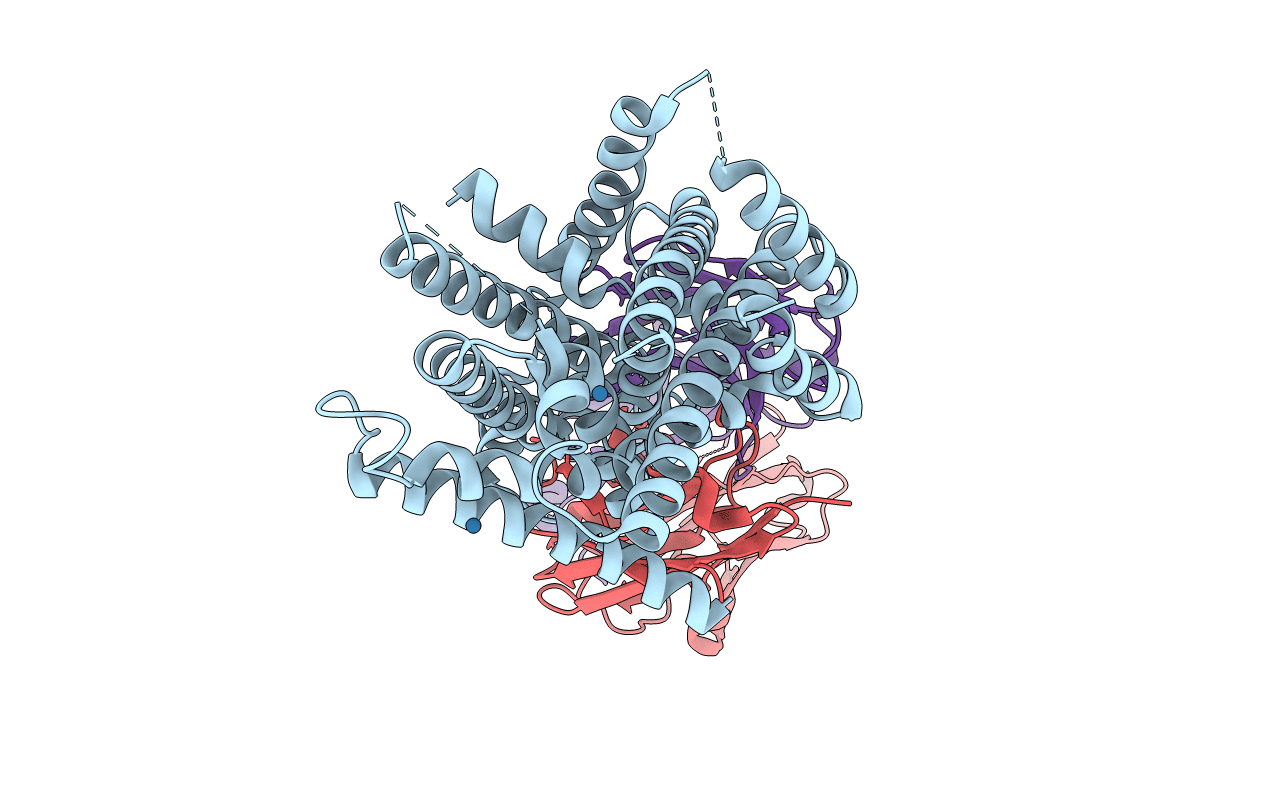
Deposition Date
2018-04-30
Release Date
2019-02-13
Last Version Date
2024-11-20
Entry Detail
PDB ID:
6D9W
Keywords:
Title:
Crystal structure of Deinococcus radiodurans MntH, an Nramp-family transition metal transporter, in the inward-open apo state
Biological Source:
Source Organism:
Deinococcus radiodurans (Taxon ID: 243230)
Mus musculus (Taxon ID: 10090)
Mus musculus (Taxon ID: 10090)
Host Organism:
Method Details:
Experimental Method:
Resolution:
3.94 Å
R-Value Free:
0.30
R-Value Work:
0.27
R-Value Observed:
0.27
Space Group:
I 2 2 2


